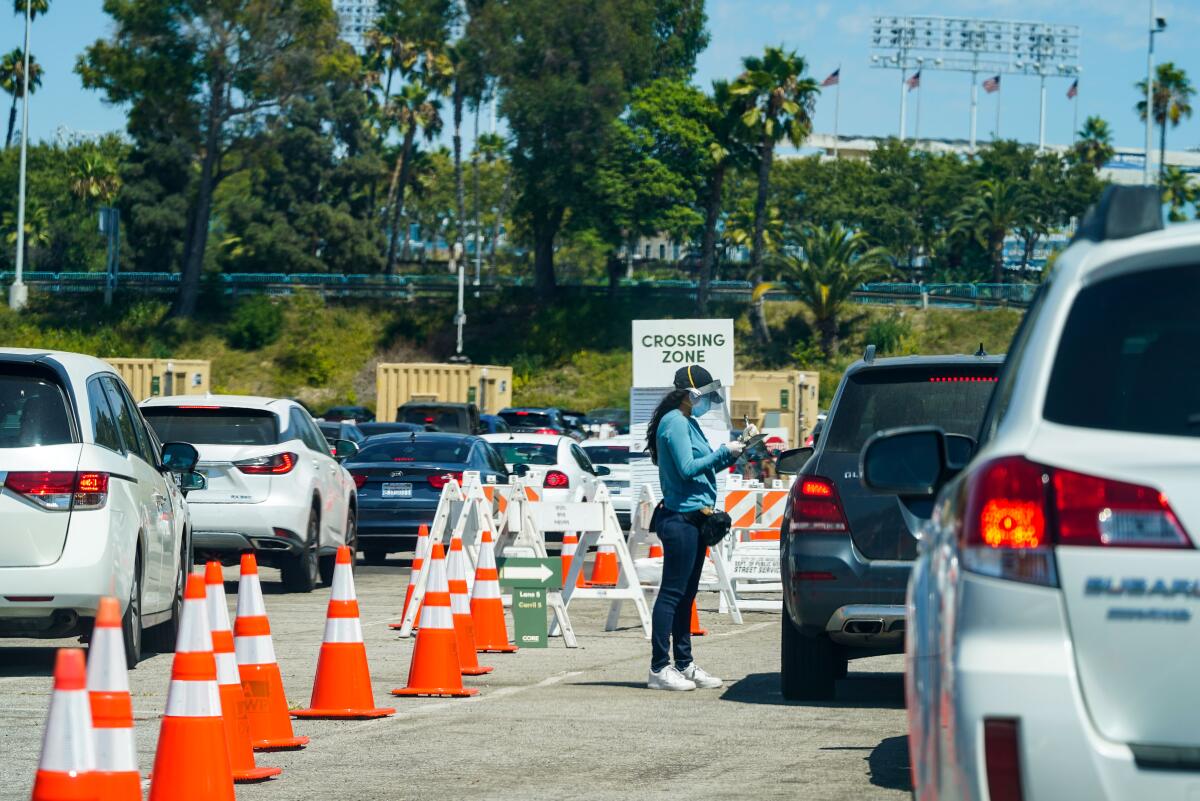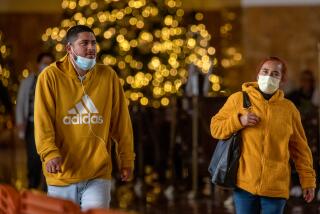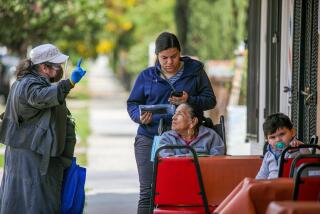Op-Ed: Reopening California depends on keeping the virus out of low-income neighborhoods

In Monterey County, 26% of the county’s COVID-19 cases are in East Salinas, a largely Latino community of farmworkers, service employees and others living in crowded conditions as they work on the pandemic front lines.
It’s a very different story in the county’s wealthy seaside communities, including Monterey, Carmel and Pacific Grove. Combined, these locales have a population that slightly exceeds that of East Salinas — but they have only about 2% of the county’s coronavirus cases.
In Los Angeles County, Bell, a city that is 93% Latino, has had more than 4 times the number of cases as Manhattan Beach, which has about the same number of residents but is 81% white.
Until last week, these sorts of stark differences would not have stood in the way of a county’s reopening process. As long as the inequalities averaged out to a decline in the county’s overall case rates and test positivity rates (that is, the share of tests that are positive for the virus), the county would be allowed to move to the next tier of business activity.
Now, with a first-in-the-nation public health strategy, California counties won’t be able to fully reopen until they prioritize reducing COVID-19 in communities hardest hit by the pandemic.
This new equity metric, which emerged from Gov. Gavin Newsom’s Task Force on Business and Jobs Recovery, is a powerful idea for both advancing racial justice and creating a sustainable path to economic recovery. Before a county is allowed to move to a less restrictive tier in the state’s reopening framework, the bottom quartile of census tracts in that county — as measured by a Healthy Places Index based on 25 indicators of economic, social, education, transportation, housing and environmental health — must separately meet specific reopening criteria.
In particular, this approach requires counties to reduce test positivity rates in the least well-off communities to match or come close to the county average — which gives counties incentive to test, trace contacts and launch prevention and clinical care programs in the communities that need it most.
Right now, counties are riding a roller coaster of reopening and closing the economy that isn’t good for business owners, workers or families. The ups and downs are caused in large part by failing to confront the racial inequities of the pandemic.
Latinos, for example, make up 43% of the state’s prime working-age population (18-49), but they are 64% of the cases and 75% of the deaths in that age group. Latinos, Black and Pacific Islander Californians are also more likely to be home healthcare aides, cashiers, truck drivers, meatpackers, agricultural workers and other critically important front-line workers.
When infection occurs in their workplaces, they end up taking the virus home to families that often live in crowded neighborhoods where social distancing can be difficult and protective gear is in short supply. Higher case rates result, feed back into the workplace, and stand in the way of economic reopening for everyone.
Bringing positivity rates down among the least advantaged does not guarantee equality — but it will force testing capabilities to be driven to the highest-need areas. And one brilliant aspect of the equity metric is that effort counts: If a county demonstrates faster progress in reducing test positivity in the least advantaged communities, then the state will approve an accelerated reopening process even if some overall average county metrics are still lagging (given the dynamics of the disease, they are likely to catch up).
California’s Department of Public Health is in the process of setting up a technical assistance team that will share best practices and resources that can help counties carry out their action plans. There are examples on which to draw, including in San Francisco, where the city has invested heavily in free testing, contact tracing, outreach and assistance for infected people in the Mission District, a historically Latino neighborhood.
Some may worry that an equity metric is burdensome and could slow down the reopening process. But if we prioritize safeguarding the health of disadvantaged Californians, there will likely be less disease as they go to their workplaces. Consumer confidence will rise, business vitality will improve and all neighborhoods will be better off.
The equity measure is an idea that should be adopted by other states, the Centers for Disease Control and Prevention, and other federal agencies as an essential strategy for COVID-19 recovery. The pandemic is further evidence of how deeply race and neighborhood segregation govern our lives. We won’t get through this economic crisis unless we support the health and welfare of every community in our counties.
Angela Glover Blackwell is Founder in Residence at PolicyLink and host of the Radical Imagination podcast. Manuel Pastor is director of the USC Equity Research Institute. Both are members of the Governor’s Task Force on Business and Jobs Recovery.
More to Read
A cure for the common opinion
Get thought-provoking perspectives with our weekly newsletter.
You may occasionally receive promotional content from the Los Angeles Times.










